Affiliate links on Android Authority may earn us a commission. Learn more.
LG V40 vs LG V30: Worth the upgrade?
November 28, 2018
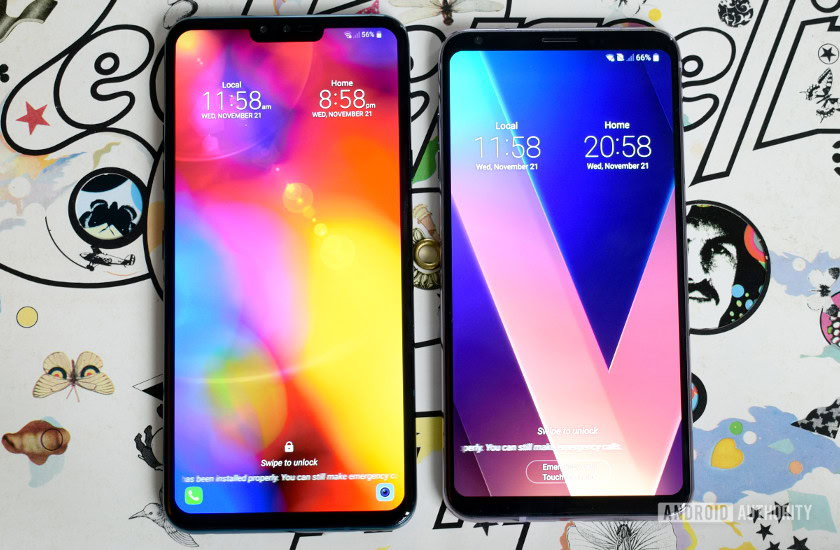
The LG V40 ThinQ has been a little overshadowed by the other high profile smartphone releases of the past couple of months, but the successor to the LG V30 remains a compelling option, especially for audio enthusiasts.
The biggest change to the V series formula is in the camera department. The V40 sports a triple sensor combo on the back and dual front cameras for selfies. The new hardware pushes the phone’s price up closer to the dreaded $1,000 mark, but is that justified?
Similar design, better specs
The LG V40 closely follows many aspects of the V30’s design. It has similarly thin bezels and curved screen edges, a central rear fingerprint scanner placement, and a centered rear camera housing. It’s also taller, ever so slightly thicker, and now has a notch. I’m honestly not a fan of LG’s extra “second screen” options to tint the notification bar — it draws far too much attention. Embracing the notch as is or blacking the screen out to hide it it works well enough.
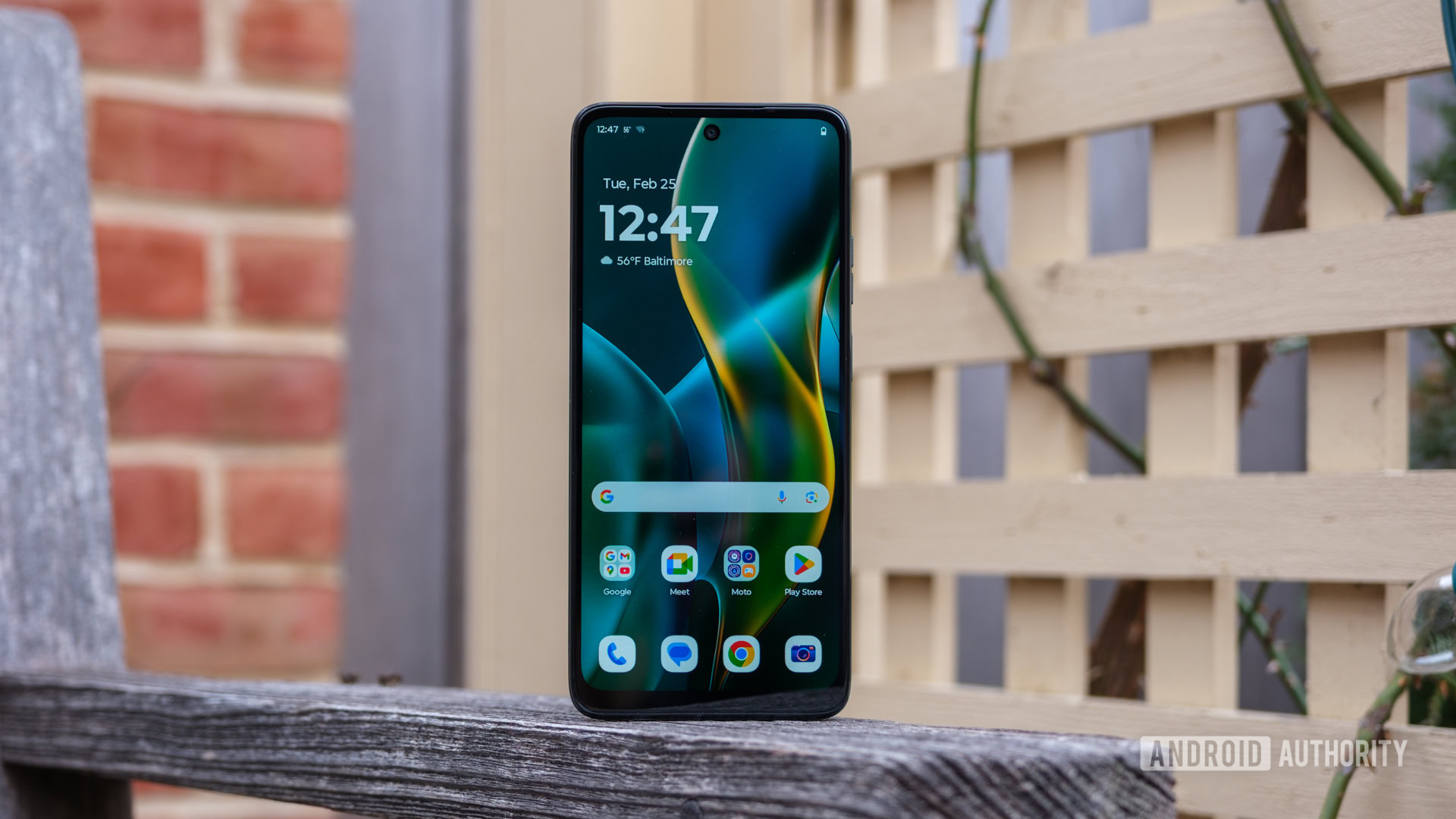
The taller P-OLED display has a slightly increased resolution, from 2,880 x 1,440 in the old 6-inch display to 3,120 x 1,440 in the new 6.4-inch model, but the pixel density is unchanged. Neither of the V40 or V30’s panels are the brightest around, but colors pop nicely and blacks are as deep as we’ve come to expect from OLED screens. Whites on the V30 are a little more yellow and the viewing angle is shallower, before you can start to see a blue tint. The V40 appears to have the better panel, but really not by much.
The V40 makes a few subtle design changes that make it feel more like a premium handset.
Despite the very similar look between the two phones, I prefer the feel of the LG V40. The V30 has always felt a little strange to hold, but the added thickness and height make the V40 feel more substantial. Subtle tweaks like the black border around the cameras, the new matte finish on the glass back, and moving the headphone jack to a more convenient place at the bottom are nice too. It’s a shame the fingerprint scanner no longer functions as the power button — now the power button is on the right side of the phone, likely because of concerns over thickness.
Another notable change is the introduction of the dedicated Google Assistant button, which first appeared with the LG G7 ThinQ. I’m not a massive Assistant user, so the dedicated button is an imposition I could live without. However, those embracing the smart assistant lifestyle might find it convenient.
Battery life is similarly unchanged, which is perhaps not so good. Both phones pack 3,300mAh batteries, which feels on the small side compared to other phones. Getting through four to five hours of screen-on time isn’t a problem for general use. Gaming obviously diminishes this though, and neither phone is really suited to super heavy use. Both phones ship with Quick Charge 3.0 chargers to quickly top up, though the V40 also supports Quick Charge 4.0 accessories if you have any.
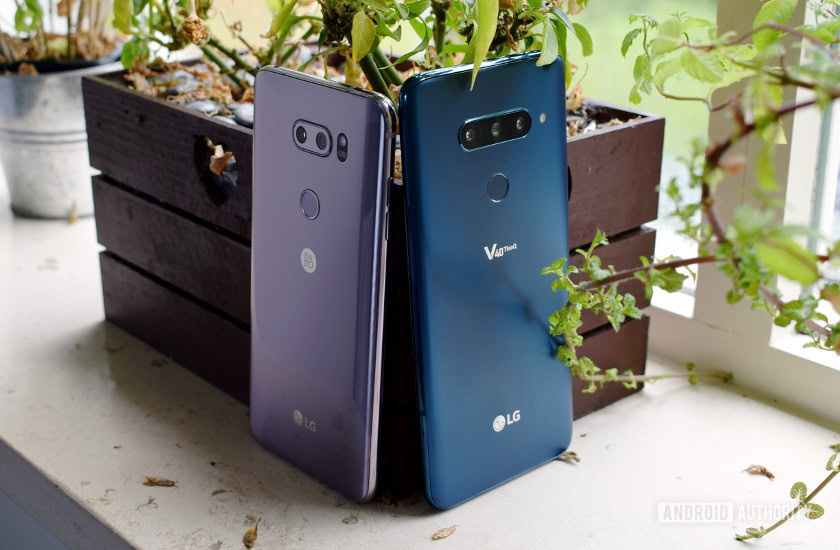
No major extras added this generation
On the performance side, there’s the newer Snapdragon 845 processing package inside the V40 versus the older Snapdragon 835 inside the V30. The newer model also comes with 6GB of LDPP4X RAM and up to 128GB of storage.
The LG V40 offers extra performance when gaming and running other really intensive apps, but day-to-day usage doesn’t feel any different with either phone. Apps open up just as fast, multi-tasking doesn’t present any major slowdowns, and you can browse the web and send messages as fast as your fingers can move on both phones. The V40 has the better specs, but there’s not enough of a jump to justify an upgrade after just one year.
| LG V40 ThinQ | LG V30 | |
|---|---|---|
Display | LG V40 ThinQ 6.4-inch QuadHD+ P-OLED FullVision 3,120 x 1,440 resolution 538 ppi 19.5:9 aspect ratio | LG V30 6.0-inch QuadHD+ P-OLED FullVision 2,880 x 1,440 resolution 538 ppi Corning Gorilla Glass 5 18:9 aspect ratio |
Processor | LG V40 ThinQ Octa-core Qualcomm Snapdragon 845 Mobile Platform | LG V30 Octa-core Qualcomm Snapdragon 835 Mobile Platform |
GPU | LG V40 ThinQ Adreno 630 | LG V30 Adreno 540 |
RAM | LG V40 ThinQ 6GB LPDDR4x | LG V30 4GB LPDDR4x |
Storage | LG V40 ThinQ 64 or 128GB UFS 2.1 MicroSD expansion up to 2TB | LG V30 V30: 64GB V30+: 128GB MicroSD expansion up to 2TB |
Cameras | LG V40 ThinQ Rear Main camera: 12MP sensor, ƒ/1.5 aperture, 78° field-of-view, 1.4µm pixel size, OIS, Dual PD Autofocus Super wide: 16MP sensor, ƒ/1.9 aperture, Crystal Clear Lens, 107° field-of-view Telephoto zoom: 12MP sensor, ƒ/2.4 aperture with 45° field of view Front Standard: 8MP sensor, ƒ/1.9 aperture, 1.12µm pixel size, 80° field of view Wide: 5MP sensor, ƒ/2.2, 1µm pixel size, 90° field of view | LG V30 Rear cameras - Main: 16 MP Standard Angle sensor with ƒ/1.6 aperture, laser detection autofocus, OIS, EIS - Secondary: 13 MP Wide Angle sensor with ƒ/1.9 aperture Front camera - 5 MP Wide Angle sensor with ƒ/2.2 aperture |
Audio | LG V40 ThinQ Boombox Speaker DTS:X 3D Surround Sound Hi-Fi Quad DAC 3.5mm headphone jack | LG V30 Hi-Fi Quad DAC 3.5 mm headphone jack |
Battery | LG V40 ThinQ 3,300mAh Non-removable Wireless charging Qualcomm Quick Charge 4 (Quick Charge 3 adapter in box) USB Type-C port | LG V30 3,300 mAh Non-removable Wireless charging Qualcomm Quick Charge 3.0 USB Type-C port |
IP rating / other certifications | LG V40 ThinQ IP68 water and dust resistance MIL-STD 810G | LG V30 IP68 water and dust resistance MIL-STD 810G |
Network | LG V40 ThinQ LTE-A 4 Band CA | LG V30 LTE-A 4 Band CA |
Connectivity | LG V40 ThinQ Wi-Fi 802.11 a, b, g, n, ac Bluetooth 5.0 BLE NFC | LG V30 Wi-Fi 802.11 a, b, g, n, ac Bluetooth 5.0 BLE NFC |
SIM | LG V40 ThinQ Nano SIM | LG V30 Nano SIM |
Software | LG V40 ThinQ Android 8.1 Oreo LG UX 6.0+ | LG V30 Android 7.1.2 Nougat LG UX 6.0+ |
Colors | LG V40 ThinQ New Aurora Black, New Platinum Gray, New Moroccan Blue, Carmine Red | LG V30 Aurora Black, Cloud Silver, Moroccan Blue, Lavender Violet |
Dimensions and weight | LG V40 ThinQ 158.7 x 75.8 x 7.7mm 168.9g | LG V30 151.7 x 75.4 x 7.3mm 158 g |
Scrolling down the specs table, there really isn’t a lot to tell the two phones apart. Both support wireless charging and have an IP68 water and dust rating and an MIL-STD 810G protection rating, as well as a high-quality DAC for the music junkies out there. The V40 makes a modest break away with a Boombox Speaker, but that’s about it. The only major difference is the camera, which we’ll look at more closely in a minute.
Software is also very similar between the two, following the LG V30’s update to Android Oreo. The V40 touts a few extra additions to its Smart Bulletin page, including frequently used apps, quick camera settings, location-based task recommendations, and the “pocket adviser.” The settings menu also makes better use of the V40’s extra height, with each option slimmed down to fit more on the screen.
I’m not a massive fan of LG’s overly colorful icons and busy settings menu, or the lack of an app drawer by default. However, the UI is functional and fast enough on both handsets. Sadly, the V40 doesn’t ship with Android Pie, which would have been a bigger differentiator.
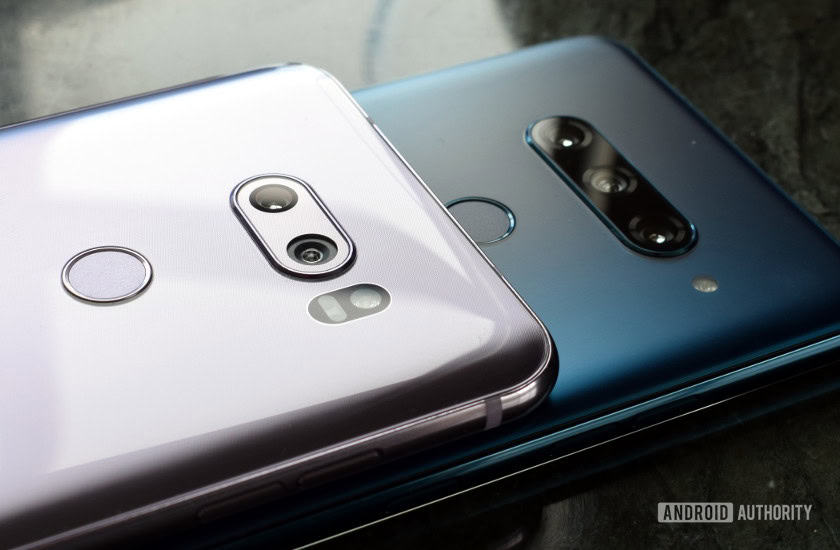
Five cameras – the key difference
The LG V40 offers three main cameras on the rear, starting with a 12MP main camera with f/1.5 aperture lens and OIS. The V40’s main camera has a lower resolution than the V30, down from 16 megapixels, but it has larger 1.4-micron pixels and a slightly wider aperture, which should make for better low-light shots. Let’s test that first:
Low light image quality is quite poor on both models, even when using the Low Light mode. There’s a lot of noise and not much in the way of color capture. The LG V40 holds up slightly better, with a fraction less noise and smudging in very dark shadows, but it’s not a major overhaul. Exposure more generally has been one of my biggest problems with the LG V30 and it hasn’t improved notably with the V40, as you can see in the overcast example above.
Related: Do AI cameras matter? LG V40 vs HUAWEI Mate 20 Pro vs Google Pixel 3 edition
Moving onto the extra cameras, the V40’s super wide angle camera has seen a megapixel bump compared to the V30’s camera, but the field of view is also slightly smaller (from 120 degrees to 107 degrees). The LG V40’s third camera is a brand-new 12MP 2x telephoto shooter, which should make your zoomed-in shots look better than digital zoom with the V30’s camera (at least during the day).
The V40’s wide-angle lens is indeed slightly narrower than the V30’s, but it’s not a massive difference. The small loss in width is worth it, as the V40 offers up notably more detail and suffers from less lens distortion around the edges. It’s certainly an improvement. The 2x telephoto lens is also better than the oversharpened digital zoom of the V30, but it’s perhaps not as big a difference as you might expect. Unfortunately, the telephoto camera takes a major dive in quality in low light.
On the front, the LG V40 has an 8MP f/1.9 standard shooter and a 5MP wide-angle camera. The V30 just has just one 5MP wide-angle shooter. The extra width comes in handy sometimes, but the image quality definitely isn’t as good as the rear cameras. Even so, this second front-facing lens might be a selling point for selfie lovers.
The triple rear camera setup is better, but not by a huge margin.
Overall, the LG V40 is the more flexible shooter, thanks to the telephoto lens and wide-angle selfie option. However, it’s overall camera quality isn’t really where we’d want it to be for a flagship smartphone. Images sometimes lack detail and can be noisy if lighting conditions aren’t perfect. The camera also still suffers from exposure issues compared to other models. The LG V40 is better than the V30, but it’s not the overhaul a move to a triple camera setup might have you believe.
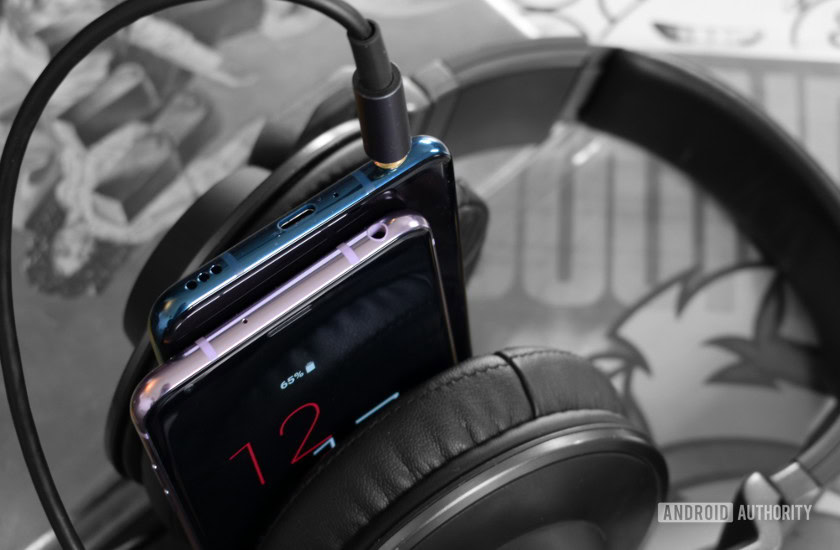
A worthy contender, at a discount
As we said in our review, the LG V40 offers up a seriously wide variety of great features, but it’s let down by battery life, and an inconsistent camera performance. This leaves it in much the same situation as the LG V30. There are some iterative improvements to the camera and overall design, but they’re not worth the expensive upgrade cost. No Android Pie yet also makes it hard to recommend an upgrade.
In the U.S., the excellent Samsung Galaxy S9 Plus is now substantially cheaper than the V40, making its $949.99 retail price seem a tad high. In global markets, the V40 will likely end up costing as much or more than the regular HUAWEI Mate 20, which doesn’t seem like a particularly good deal. If the phone sees one of LG’s typical price drops after a few months, it could be a solid purchase. That said, it’s almost certainly not worth upgrading to now if you already own an LG V30.
More LG V40 content